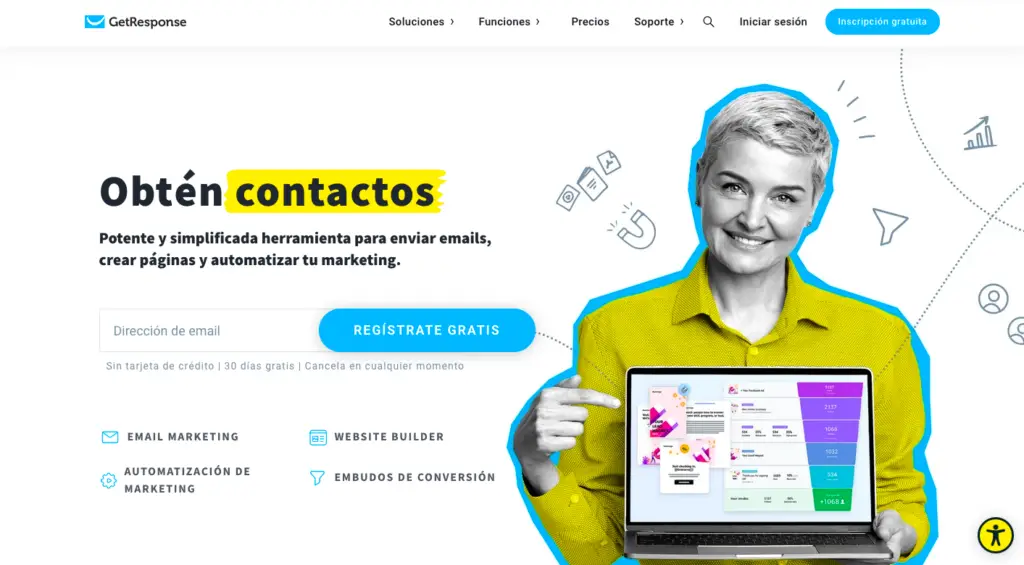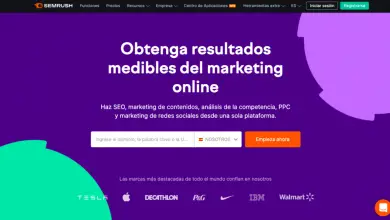Marketing Automation - A Basic Guide
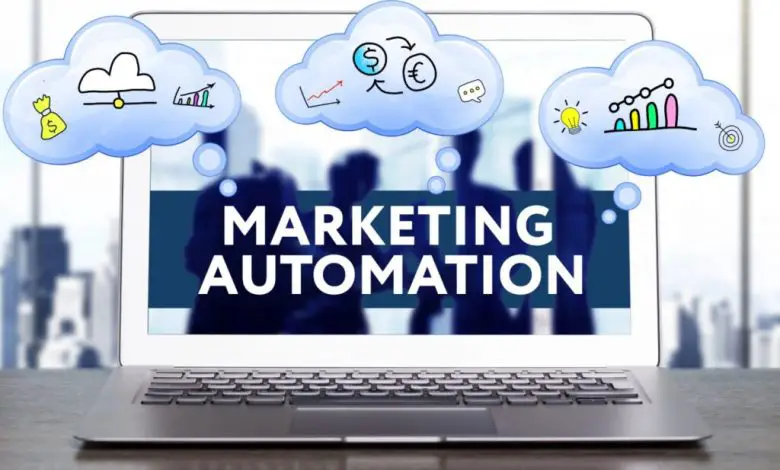
In this article you will find out what marketing automation, how it works, examples, strategies and the best software to get started.
Every customer is important. But when you're running a business, you might not have the time to create a unique campaign every time you need to talk to them. Marketing automation helps you keep the conversation going, so you can develop those relationships with customers and your business.
That is why in this guide, you will know the basics to start your marketing automation strategy and which software is the best to achieve it.
Let's start!
What is Marketing Automation?
Marketing automation uses technologies that eliminate the need to send a one-time email every time you want to speak to your contacts or manually tag customers when they show interest in a product on your store.
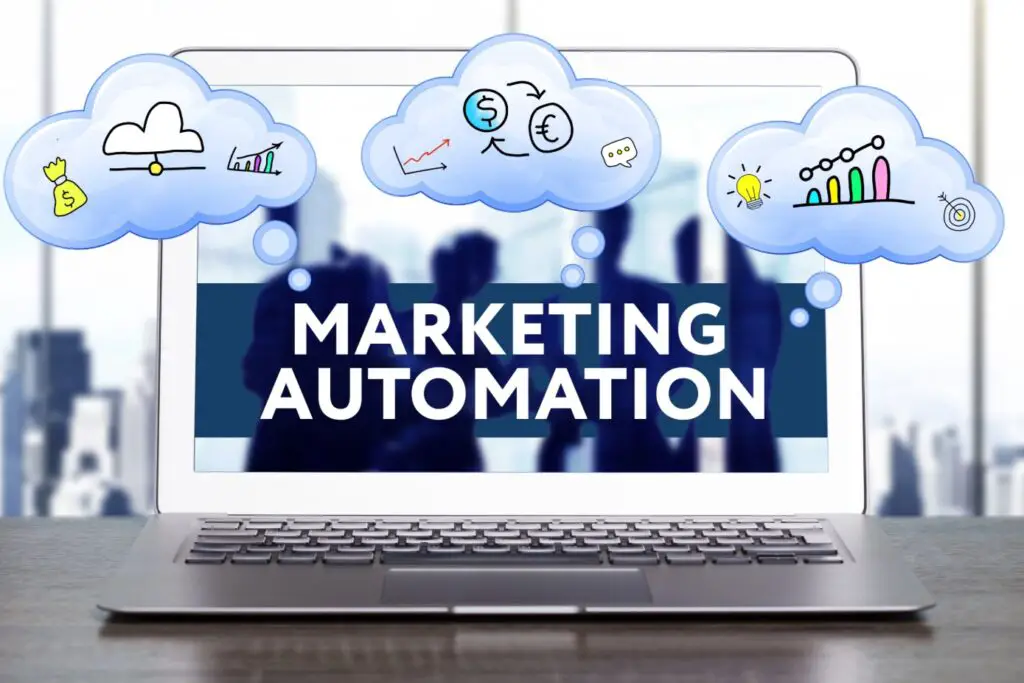
Basically, you can set up an automation to execute your strategy the way you want it to, and it will run in the background in your business. This allows you to be there for your customers, even when you are on vacation.
You can use automation tools to personalize an experience for people based on their behaviors, preferences, buying activity and more ...
Your customers will feel like you've designed all of your marketing messages just for them, increasing their confidence in your brand. And you'll build a loyal following of people who love your business.
What is marketing automation for?
Help you understand your customers
It makes your interactions with them richer and more profitable. According to a 2018 report, 80% of customers are more likely to buy from brands that offer personalized and relevant experiences.
Personalization often promotes customer loyalty as well. In a 2017 survey, 44% of consumers said personalized interactions made them more likely to buy from the company again ...
Customers appreciate that companies treat them like individuals with personalized messages, not like a sea of faceless consumers.
Enables the implementation of complex strategies
Being strategic with your marketing communications isn't just about reaching your contacts repeatedly, it's about considering and planning when it will be most meaningful to engage with buyers or potential customers.
To do this, many companies use drip campaigns, sending a series of pre-written emails at regular intervals. But there are also automation tools that allow to digital marketers from think about and create workflows to execute more complex strategies.
An example of this is GetResponse, its workflow builder not only lets you create emails that reach people at relevant times, but it also helps you organize, cleanse, and manage your audience based on engagement.
Whatever your market niche, the idea is to consistently add value to a customer over time, strengthening the relationship and their perception of your brand.
The good news is that GetResponse has everything you need to automate all your marketing.
Go here for a 30-day free trial of GetResponse.
Marketing automation (combined with your strategy) allows you to reach higher quality contacts and add complexity to your campaigns as it allows you to send personalized messages to different segments of your audience based on their interests, behaviors and even data from your CRM.
You can schedule these individualized messages based on customer actions to improve customer relationship management.
Let your team focus on higher tasks
Automation solutions are more and more common in digital marketing, helping specialists to be more efficient ...
And by automating some of the manual, repetitive tasks that they typically have to do on their own, they can focus on the most rewarding aspects of your job and the strategic side of lead acquisition and customer retention.
When your team automatically plans and sends marketing messages, for example, you can focus on improving the customer experience and responding to inquiries or solving problems.
Saves you time and resources
Marketing automation can help you save time, improve engagement, optimize your marketing, and improve your bottom line through workflow automation. Treat your customers to personalized attention with thoughtful, authentic messages that sound like you're writing to a friend.
Whether you have a hundred or millions of fans. You can use labels in an email to start with the customer's name, for example, or you can contact people on important days, like birthdays.
How does marketing automation work?

Automation depends on information. Anytime someone subscribes to your list, buys something from your store, or clicks on your advertising banners, it provides you with valuable data.
If you're using GetResponse, for example, your contact details are all in one place so you can get a holistic view of your audience as a whole.
GetResponse also offers a visual breakdown of data, such as the location of your contacts, how often they interact with your emails, and more information, which you can turn into a map that will guide your customers to take the desired action at different points. interaction.
You can also use browser cookies to track the behavior of people on your website and to record where they go, what they do and what they buy.
Next comes the “marketing” part of marketing automation. It gives your system certain data, including:
- What messages you want to send and what tags you want to add or remove from a contact.
- Which segments of your contacts do you want to target.
Under what circumstances should marketing automation be triggered?
If all goes according to plan, your system engages your contacts, just when they're most likely to convert.
5 essential marketing automation tools
When choosing your automation tools, you need to keep your business goals in mind. Automation tools are individual workflows that you can configure to perform different functions to help you achieve the goals you have identified for your Marketing strategy.
At GetResponse, automation tools span the entire platform, so you can think holistically about how you want customers to interact with your business:
1. Email marketing automation
Automation of e - mails is the key to all of this and the success of your marketing by e - mail.
With email automation, you can, for example, automate an email, like a welcome message or an abandoned cart, to remove repetitive tasks from your plate, or set up a drip campaign if there is a series of content that you wish to receive….
Once a customer has met the required criteria to enter your automation, they will activate all emails included in the workflow.
2. Customer journey
Named because it lets you visually map how you want customers to engage with your brand and see how that relationship evolves over time, this tool helps you better think through an end-to-end experience and plan its development within your funnel..sales.
Email is one of the interactions you can configure to send when customers reach this stage of the system's individualized journey, but this tool goes beyond email ...
With the Customer Trip Creator, that's exactly what you do: create trips for your customers, with the logic they must adhere to in order to move on to the different interactions on your card, like receiving an email or being withdrawn from your card. 'a group.
3. Planning
It is important to take the time to properly plan the content you read and send to your audience ...

From emails to social media posts and postcards, you can advance your marketing by scheduling the date and time you want your content to be sent.
4. Reorientation
Email and ad retargeting makes it easy to remind people of what they have seen on your site and gives them a clear path to your store to shop.
When developing your strategy, it is good to keep in mind that the people won't always buy something the first time. They may be distracted or not ready at this time ...
Think of retargeting as a little nudge that gets people to think about your products and / or services until they realize they need it.
5. Optimization and recommendations
With product recommendations, dynamic content, optimization of delivery times and a / b tests, you have the tools you need to make every interaction with your customers more meaningful and valuable.
Marketing automation to improve the customer experience
How can you use marketing automation while providing a better experience for your audience? ...

Before making a purchase, people can read the website, think about the product they want, analyze it, and finally buy again. This traveling itinerary is called the customer journey and it is different for everyone.
Help you connect with new fans
If someone expresses interest in what you have to offer and enters their email into a subscription pop-up form on your site, you can send them a welcome email to introduce yourself and give them a reason to stay. .
Help you sell more
It's good to sell to your customers, but with automation, you can do it without sending a lot of promotional emails.
Think of this contact who registered via a pop-up form on your site. When that contact starts heading to a purchase, like putting something in their cart without paying, you can set them up to receive an abandoned cart email.
In the meantime, you can send occasional reminders to people who haven't interacted with you for a while.
Email retargeting, for example, reminds people of the good things they've seen on your site. Chances are at least some of them will still be interested and will make a purchase if you contact them.
Cultivate a two-way relationship of trust
When you deliver relevant content to your customers, you show them that you care. The more targeted your communications, the more they trust you to continue purchasing your high quality products and / or services.
You can even use automation to send coupons or other discounts to people who meet certain loyalty or spend criteria.
Marketing Automation Best Practices
1. Be specific about what you hope to accomplish
Collect all the data you have on your current marketing strategies and set goals for what you want to achieve with automation. Then you can measure your progress.
You can also collect some examples of successful marketing automation campaigns to give you some ideas.
2. Think about how you want to segment your audience.
Marketing automation benefits you the most when it's as targeted as possible. Who to contact depends on your product or service and your customer base.
Segmentation is a key part of successful automation, so take your time. It is better to do it well than to do it quickly.
Maybe you have products that appeal to different age groups. In this case, you will want to segment by demographics.
Your services may attract people with different levels of responsibility to their business. If so, segment by career level.
3. Create an organization chart
Find out when you want people to enter your workflow, for example by joining your broadcast list, then specify when to move these people forward.
GetResponse workflows allow you to track this type of flow ...
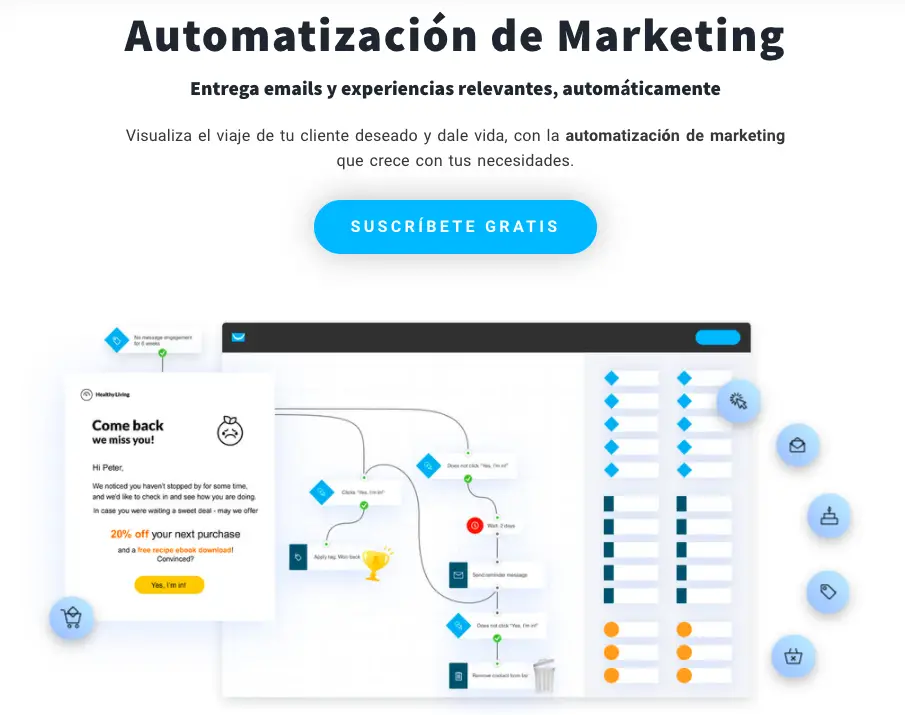
If someone interacts with your welcome email, for example, that person receives an offer related to the action they've taken. If the person uses the offer, they are placed in a group that benefits from regular discounts and offers, and so on.
4. Try everything
Track the performance of your campaigns with A / B testing. Test different subject lines, images, messages, or send times to find what resonates most with your audience.
If some of your targeted messages are not performing well, you can use this information and improve your next campaign. On the flip side, you can see what your successful campaigns have in common and apply that information to future marketing efforts.
How to make a marketing automation strategy?
Whatever your industry, it's easy to set up marketing automation for any situation ...
Once you've defined your goals, created your message, and decided on the criteria that will guide your workflow, you can begin to build lasting relationships with your customers.
Create a customer visit
Use GetResponse to create unique, automated marketing workflows that add tags based on contact behavior, send relevant emails, and perform other important tasks.
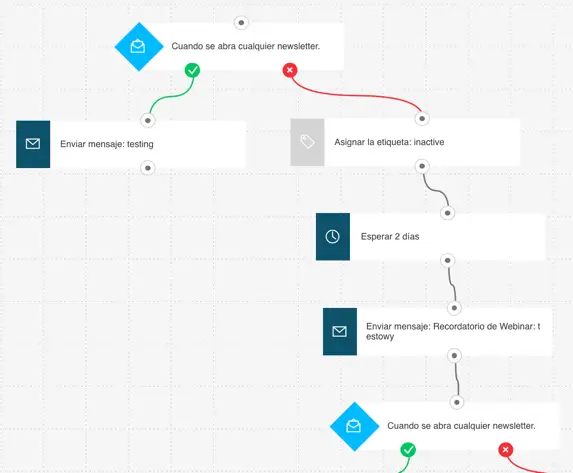
It starts with a starting point that will add contacts to a workflow based on the conditions you set.
Create automated customer journey maps
Create automated customer journey maps that deliver unique experiences to each of your contacts. With GetResponse's new marketing automation tool, you can find your most engaged customers, find out what interests them, and be there for them when needed.
Determine how your customer's journey begins
From making a purchase to abandoning a cart to signing up for your list, GetResponse has all the automation starting points you need to make sure you're engaging with the right ones. people at the right time.
Every automation needs a start - choose what works for your business.
Design successful automated emails
When you create automated emails, you can retain customers without having to send messages one by one. But how is disclosure automated without losing authenticity? ...
It's easier than you might think. GetResponse makes it possible to wish customers a happy birthday or to thank them for a purchase.
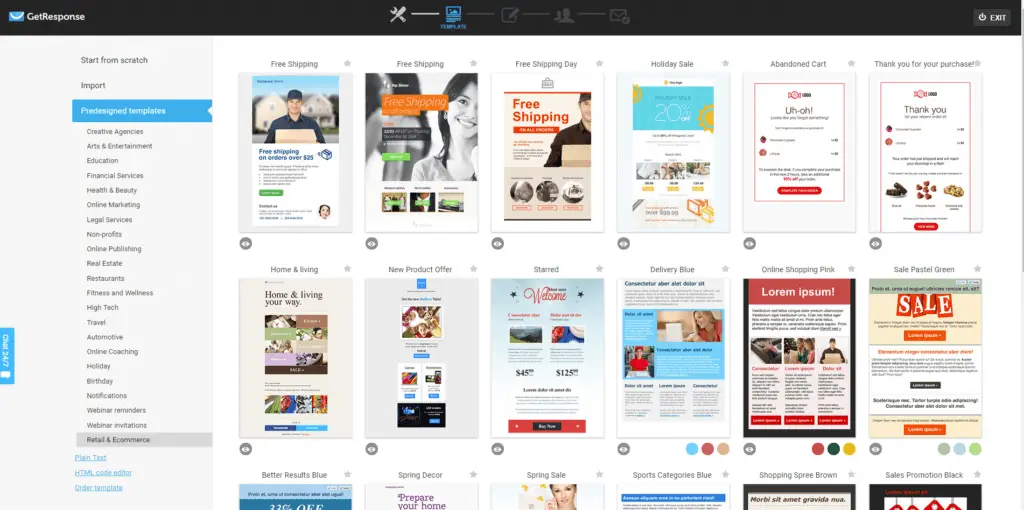
By creating personalized and targeted emails that are sent when triggered by a date, event or activity

